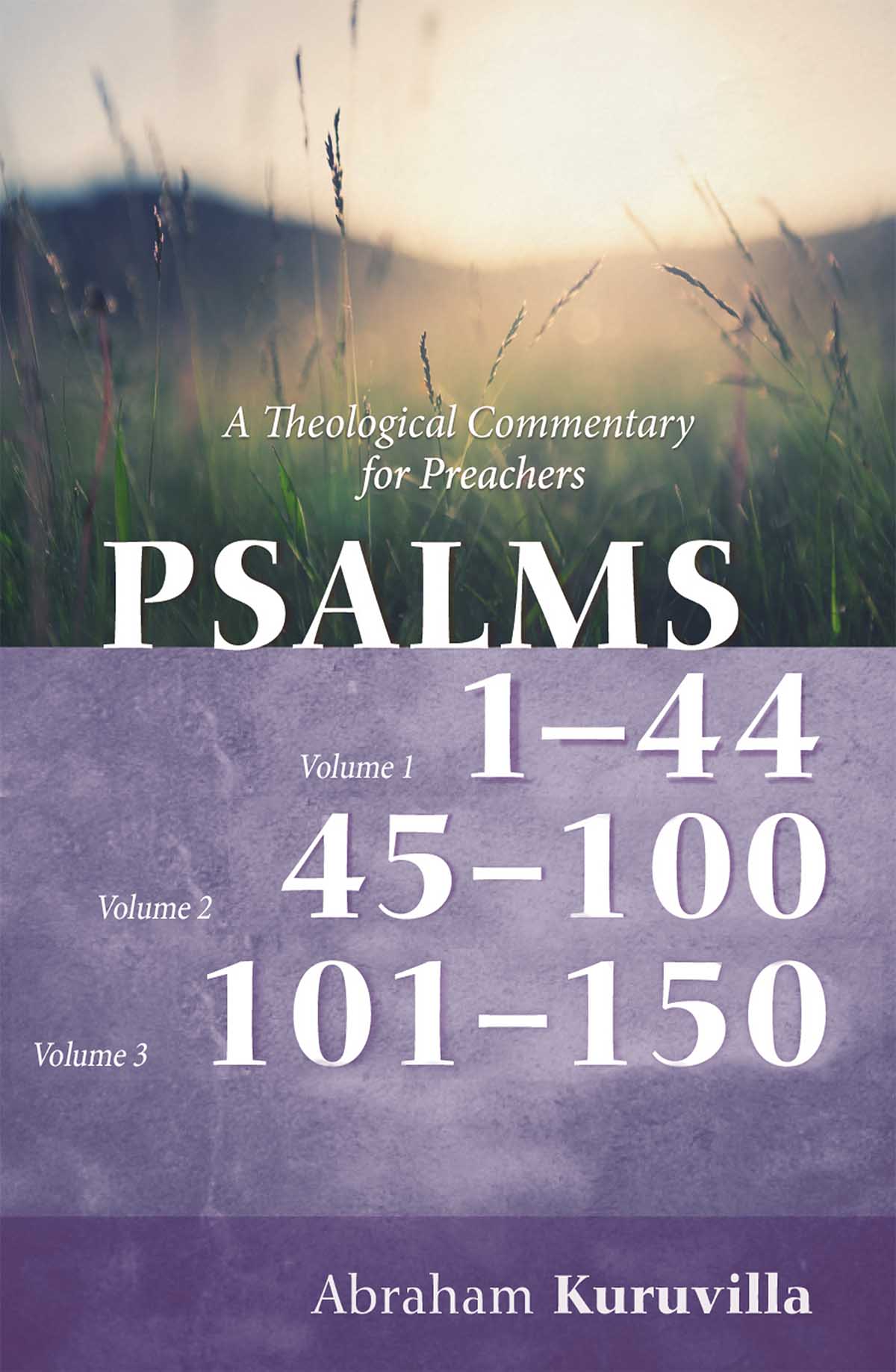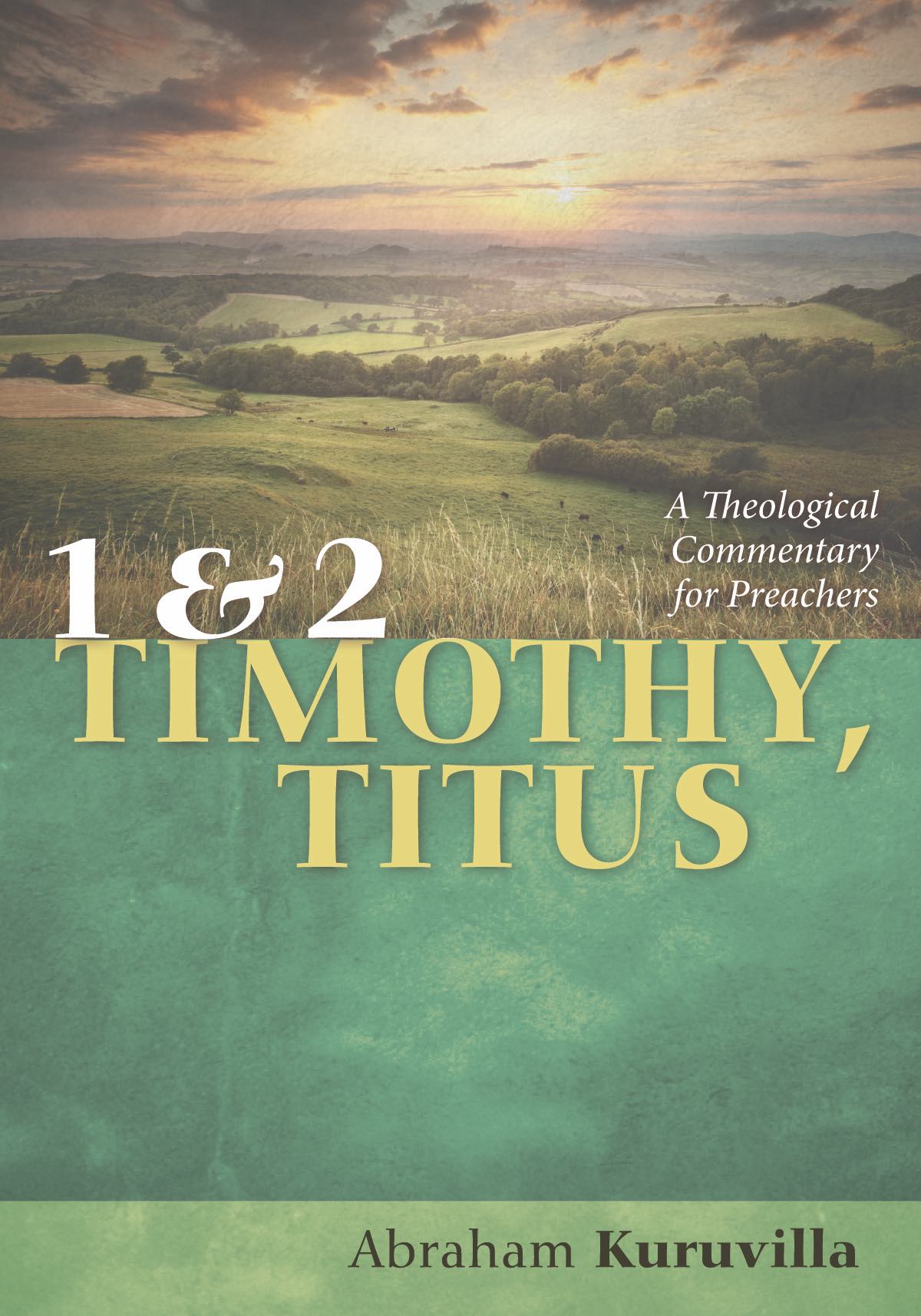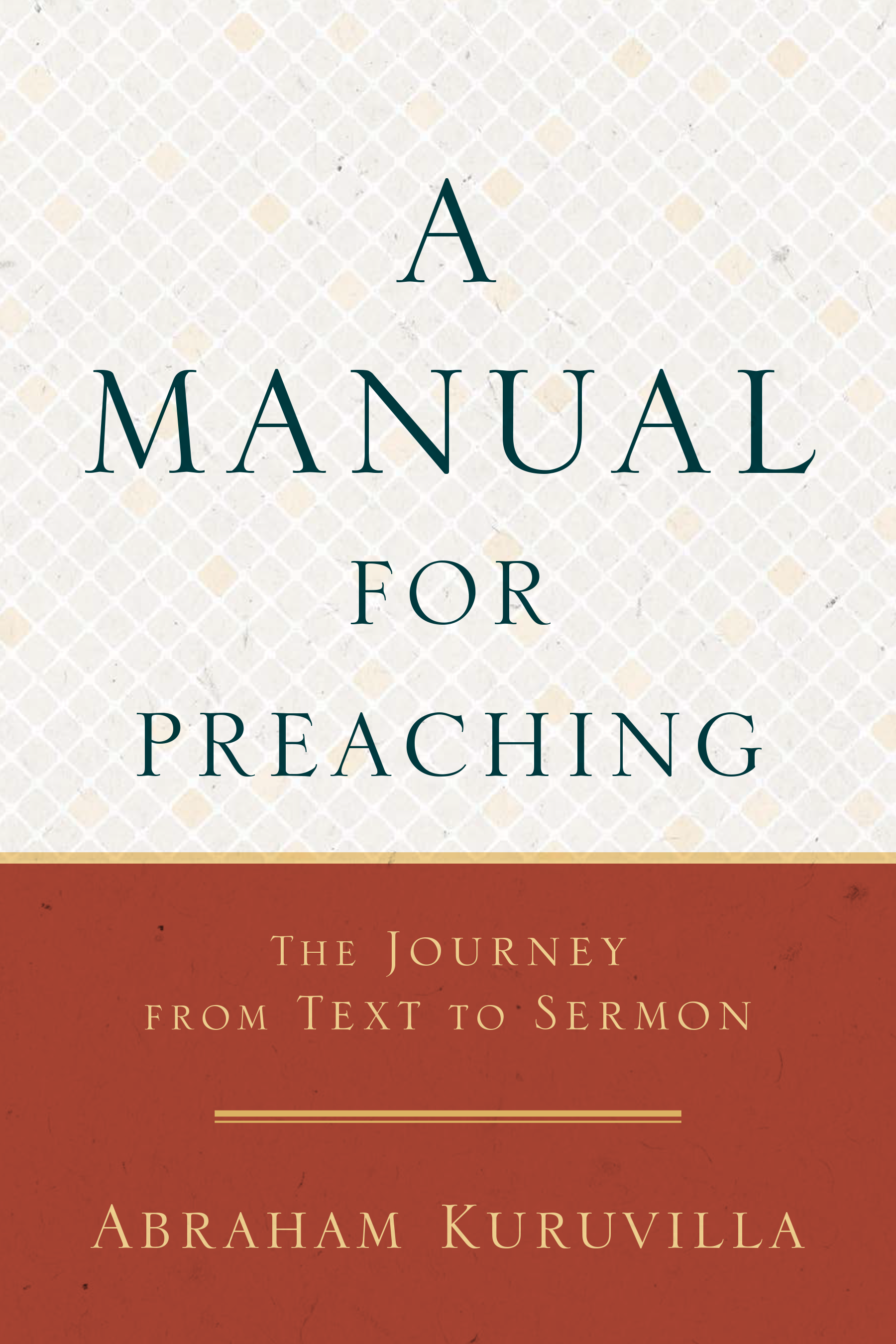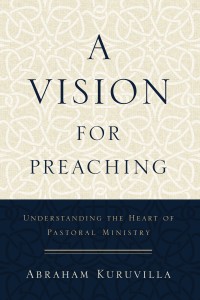Kill the Big Idea?

For those interested in a different—and somewhat provocative!—approach to preaching, check out my ARTICLE in a recent issue of the Journal of the Evangelical Theological Society:
“Time to Kill the Big Idea? A Fresh Look at Preaching”
(JETS 61.4 [2018]: 825–46)
ef
See Steven D. Mathewson’s RESPONSE to my article in the Journal of the Evangelical Homiletics Society:
“Let the Big Idea Live! A Response to Abraham Kuruvilla”
(JEHS 19.1 [2019]: 33–41)
And here is my REJOINDER to Mathewson:
“Big Idea—Requiescat in Pace! Authorial Rejoinder to Steven Mathewson”
(Homiletix [August 1, 2019], 1–16)
ef ef
See Jeffrey Arthurs’ and Russell St. John’s RESPONSE to my article—the text of their oral presentation at the Evangelical Theological Society Annual Meeting, San Diego (November 21, 2019), is reproduced here:
“A Response to ’Time to Kill the Big Idea?’ by Abraham Kuruvilla”
Here is my REJOINDER to Arthurs and St. John—this, too, was an oral presentation at the Evangelical Theological Society Annual Meeting, San Diego (November 21, 2019), but I have considerably expanded that version to this one:
“‘Big Idea? DNR!’ Authorial Rejoinder to Jeffrey Arthurs and Russell St. John”
(Homiletix [December 1, 2019], 1–19)
[Another version of my interlocutors’ arguments was published as “Big Ideas and Bad Ideas” (JEHS 20.1 [2020]: 26–50), authored by one of them, Russell St. John. This essentially reproduces the same arguments as were put forth in the Evangelical Theological Society joint presentation by Arthurs and St. John, even to being verbatim in parts. I think I’ve countered all of the points in St. John’s article in my rejoinder to the two of them (posted above); I shall not weary my already fatigued arm flogging this (IMHO: dead) Big-Idea horse again!]
ef ef ef
The other day, Matt Woodley of Preaching Today (an arm of Christianity Today) interviewed me on their “Monday Morning Preacher” program about The Big Idea Debate. Go here for the AUDIO INTERVIEW.
ef ef ef ef
As always, comments welcomed!
PS: Here’s what one kind soul (whom I cited in my original essay as a Big Idea proponent) had to say about my JETS article:
It has been popular among a large number of evangelical preachers to use the concept of the “Big Idea” as the basis for organizing their preaching content of their sermons. But few have taken the time to time to examine this concept more thoroughly to see if it really accomplishes what is expected of us a proclaimers of the Word of God. However, Dr. Abe Kuruvilla [in “Time to Kill the Big Idea? A Fresh Look at Preaching”] has done what is so needed with regard to this topic. Using a clear, irenic, yet persuasive style, he has dared to point out how this method has the potential for missing the very text we hoped we were carefully explaining and announcing to God’s people. His contribution is so critical and important to the homiletical and hermeneutical task of interpreting the Bible that it is high time for a full discussion about this method of approaching Scripture that needs to be examined more carefully. What Abe has done in this article has the potential for becoming one of the classic homiletical statements that could have a mega effect on future preaching styles. So, let the conversation begin. I commend this essay to all teachers and practitioners interested in the proclamation of the word of God.”
Walter C. Kaiser, Jr.
President Emeritus
Gordon-Conwell Theological Seminary
S. Hamilton, Massachusetts
And another:
I wanted to write and commend you on your excellent article evaluating and critiquing the “Big Idea” in the December issue of JETS. I have always been an admirer of Haddon Robinson. Nevertheless, I have always had some doubts about the Big Idea approach which dominated the homiletics of many evangelical seminaries. Your article pulled it all together and articulated very powerfully what I had felt but couldn’t put into words the way you so eloquently did. Thank you for an excellent article. I always enjoy reading JETS articles, but this edition, yours was the best!”
Timothy C. Tennent
President
Asbury Theological Seminary
Wilmore, Kentucky












 Abe Kuruvilla is the Carl E. Bates Professor of Christian Preaching at The Southern Baptist Theological Seminary (Louisville, KY), and a dermatologist in private practice. His passion is to explore, explain, and exemplify preaching.
Abe Kuruvilla is the Carl E. Bates Professor of Christian Preaching at The Southern Baptist Theological Seminary (Louisville, KY), and a dermatologist in private practice. His passion is to explore, explain, and exemplify preaching.
26 Comments
Dr. kuruvilla.
I thank my Father God very much because I found your preaching books. My brother taught me the big idea. But in his classes we learned to deliver every detail of the text. He told us: “we are servants of the text, let it speak”.
Now I understand why my brother didn’t exactly teach the big idea: my brother is a linguist, and he pushed me to study linguistics, pragmatics, and discourse theory after school. So I quickly understood what he was teaching about PT vs. the big idea.
But, I would like to ask you: what can we learn from the big idea books, and the big idea authors? I would like to think that his text theory is different from his communication theory. Do you think we can learn something from them?
Thank you very much for your life.
I think of the Big Idea as learning to play scales on a piano. Perhaps helpful for beginners, but one must leave those behind soon.
That being said, I do appreciate Haddon Robinson’s emphasis on application, and his keen sense of preaching as a conversation, rather than a lecture. That made an impact on evangelical homiletics.
Thanks for your kind words!
AK
Hi Dr. Kuruvilla,
I finally got around to reading your JETS article. I always wished my life/schedule would have allowed me to take more of your classes.
One big (no pun intended) ah-ha for me was the fact that no passage can truly be distilled down to a Big Idea.
One of my biggest frustrations over the years and still wrestle with at times, was my inability to “figure out” the main idea of the text. I always would sway back and forth between four different thoughts. I think the reason for this is because the the text is more powerful, rich, and un-distillable (probably not a word) that I thought and was previously trained.
It truly is my passion to learn how to better understand the “doings” of the author and maybe one day get back into teaching others how to do the same.
I a going to practice with Judges ;). I LOVED Mark.
Looking forward to reading your manual as well. I am almost done with “Privilege the Text.”
Thankfully,
Logan
Logan,
Thanks!
One thing to note: I believe there is a single thrust, a single authorial doing (i.e., pericopal theology) in any given text. I’m only arguing a) that the pericopal theology of a text needs all the words of the text to express it; and b) that no single sentence of a few words can fully capture that pericopal theology that needs all the hundreds of words of the text.
(Some might carp and say that my single pericopal theology is no different from the single Big Idea. It is obviously not the same, because of a) and b). Again: a) the single pericopal theology is inexpressible in any other words than those of the text. And b) there can never be a lossless capture of the pericopal theology in a Big-Idea-like propositional sentence of a few words.)
Keep thinking. Keep preaching.
AK
Hi Abe,
I appreciated the articles and passed them along to others I’ve been in dialogue with. I especially appreciated your more extended treatment of Story (re)telling. As you point out, I think this is perhaps the most revealing aspect of the Big Idea (BI) hermeneutic. The text is mere transport to the ultimate destination (the BI).
The more I read your rejoinder, the more I wanted to shout that the author’s Big Idea is the text itself!
In my own preaching, it’s been challenging (and fun!) to study/preach Proverbs with the author’s doings in mind. I’ve found that going through Genesis recently has at least prepared us for how this exhibit (Proverbs) is apart of the greater museum rather than a separate museum on different grounds. The challenge is curating a new set of textual clues from those we found in the Genesis narrative. Maybe like going from Van Gogh (representational) to Pollock (abstract), to merely describe a change in pedagogical doings.
Excited for your Manual and to learn more on the Epistles.
In Him,
Jeremy
Jeremy,
Thanks! I love the notion that “the author’s Big Idea is the text itself.” Wonderful!
And the museum metaphor. Perhaps each biblical book is a separate exhibition within the same museum. And so on ….
Thanks for your thoughts! Keep them coming.
Abe
Dear Dr. Kuruvilla, I have read with a lot of interest Dr. Mathewson’s article and also your response. It seems to me that, with each criticism, your argument becomes stronger, sharper and even more persuasive! „The ball” is now rolling for changing the homiletical landscape! It will only grow bigger and run faster! It is refreshing to read someone who truly privileges the text, the sacred text!
P.S. What is next for you in terms of writing? Maybe some more commentaries or something else…?
Thanks, Daniel!
I’m just a li’l David flinging a few stones here and there!
Current projects: commentary on the Pastoral Epistles and a book on the hermeneutics of application. A Manual for Preaching (companion volume to my A Vision for Preaching) will be out early October. Appreciate your prayers!
Dr. Kuruvilla, thank you for your answers!
I have listened to some of your sermons and have read some of your writings and really believe you are a gift from the Lord to His church! What a brilliant mind! Continue to write, dear brother! I have just read for the second time your article posted here, also Homiletics and Hermeneutics, and I am now into A Vision for Preaching. I am compelled by your thesis and thinking.
The biggest challenge that I see is this: is it transferable? Can others learn a clear step-by-step, predictable way of seeing the theological focus? With the Big Idea and “points”, people have a clear and transferable methodology. And then, can lay leaders from our churches, who lack training in Biblical languages, be able to get this new way of studying and preaching? They were taught by us, the preachers, to think in points…
All the more eager to get your coming manual on preaching, as I am preparing to start a PhD in Expository Preaching! May God grant you grace and health to continue writing!
Thanks for the kind words!
My feeling is that, like all forms of art, this too is transferable, but perhaps not in a traditional format, but rather in an “apprenticeship” sort of way. Caught, not taught, as they say.
Hopefully, my commentaries help readers through a number of text “pictures” (pericopes), so that after being led through several, they catch the way it is done to recognize the theology of the text.
Honestly, even for the “Big Idea,” the same situation pertains: How do you find it? Other than asking, “What’s the author talking about?” and “What’s he saying about what he’s talking about?” there aren’t any guidelines.
Blessings,
AK
Dr. Kuruvilla, I was wondering if in your coming book on preaching you are devoting some chapters on practical advice for genre-sensitive preaching (or at least recomand some useful resources for this area). Thank you!
Daniel,
Thanks for your question.
Short answer: No. Simply because IMHO too much is made of genres affecting the way one interprets. While I’m certain it does, my hermeneutic is at a more foundational/fundamental level than genres. One might as well ask: Do the rules of grammar change with genres? Likewise, in my conception: Does the way authors do things with what they say (the core of my hermeneutic for preaching) change with genres? The answer for both questions is, “No!”
That being said, the examples in my upcoming book are drawn mostly from Genesis, Proverbs, and Ephesians, thus demonstrating authorial doings from at least three different genres. But you’ll find that such authorial doings are discovered in not very different ways in each of those genres (and even in others I’ve worked on).
The level of exegesis undertaken to discover authorial doings (like the rules of grammar) is, again, more foundational/fundamental than the generic constitution of the text. Check out my commentaries …
AK
Hi Dr. Kuruvilla,
I’ve longed been puzzled by the fact that, in hermeneutics classes, the importance of literary genre is one of the first and most foundational topics discussed. Yet in homiletics classes, literary genre is considered an advanced topic. Introductory lessons focus on epistles, from which beginning students are expected to preach. Only in specialized electives, or in books devoted specifically to the topic, are students taught to think about how a biblical text’s genre should impact preaching.
As I read your article again, it occurred to me that this functional relegation of genre to the category of “helpful but not essential” is symptomatic of the tendency toward preaching distillates. If what we’re after is a principle, then a poem or multifaceted narrative is an encumbrance. Likewise, genre is one way in which authors *do* things. If preaching is primarily cognitive, rather than volitional and affective, then diverse genres are a hindrance rather than a help.
In theological hermeneutics, Charles Hodge’s description of the Bible as “a storehouse of facts” is widely critiqued. But, in practice if not in theory, evangelical homiletics seems to have assented to this view of Scripture.
Eric
Eric,
Thanks.
In fact, even didactic literature is conducive to being read for its doings, and not for its saying/principles. Now, of course, everything can be read for sayings, as for e.g., Matt 28:19-20 as a proof text for the Trinity; or to read a Gospel as a series of events (behind the text). This is to read a text as discursive.
All I’m arguing is that that kind of hermeneutic is not what preaching is all about. It is not about the exposition of entailments of the text and the like (all sayings of the text, usually attending to behind-the-text issues). Rather it is about demonstrating/curating the force/thrust of the text (the doings, the theology of the pericope), i.e., reading the text as non-discursive, as well. Every genre of biblical texts is conducive to such readings.
Yes, of course, genre is a doing of the author, too, but on a more general level than the specifics of a pericope. The specifics of a pericope (read, certainly, in light of the generality of genre) yield the theology of the passage. I think the problem is in misunderstanding what I mean by “(pericopal) theology.” It is not a species of biblical/canonical/systematic theology, though governed and superintended by them. In fact, I claim that pericopal theology is all that a pericope is doing; it cannot be expressed in words other than those of the pericope—it is irreducible to anything other than the text.
AK
Dear Dr. Kuruvilla,
Your paper was revolutionary and mind-blowing for me! Also, I was able to identify myself with your thesis as many times I was listening to narrative sermons and thought: “This is too simple! What about the rest of the text?”
I am all the more eager to get your forthcoming manual on preaching! I believe it will be a game-changer in homiletics! Any idea in which month of 2019 will be put? Thank you for your work for the Lord!
Thanks, Daniel, for the kind words.
A Manual for Preaching: The Journey from Text to Sermon (Baker) should be out in the last quarter of 2019. Hopefully sooner, Deo volente. Working on the galleys right now!
Dr. Kuruvilla,
Is it possible to avoid ‘reductionism’ all together? How does your theological thrust accomplish this? How do you see the imperative statements you often close your sermons with as avoiding this issue?
Relatedly, what should a preacher desire the people of God walk out the doors of the church with if distillation is all-together avoided?
Thanks,
Josiah
Josiah,
Nope, it isn’t possible. Reduction has a valid and constrained use as I note in the paper. And, yup, even for application, because application itself is a reduction of sorts (any application of one pericope can conceivably be employed for other pericopes—you and I have probably reused applications in different sermons ourselves: another example of overdetermination).
Ah, but here’s the difference. What the sermon does is enable the inspired pericope of Scripture to hit the listener with its full force/thrust/impact. WHAM! Then, when the pericopal theology (PT) has had that impact, the pastoral preacher provides an application (admittedly a reduction of sorts). So what do people walk out with? Not that reduction application, whatever it may be. Yes, they are planning to do that, hopefully, but it’s the impact of the word, by the power of its Author that has hit them, convicted them, motivated them, empowered them, changed them, … to go and do that finite, narrow, specific “reduction” of application (usually these are “significances” anyway, i.e., the preacher’s pastoral and wise suggestions for response by a particular audience).
All that to say, we REALLY need to rethink what the sermon is doing and what we expect it to do for our listeners. The goal is not the application per se. The goal is primarily the experience of the text = catching the PT (and secondarily, a response to that experience = application).
Thanks for the comment and question. Blessed 2019 to you and all yours!
AK
Thanks for the response, Dr. Kuruvilla. That clears things up a bit for me.
I remember years ago in my ordination exam, one question I was given had to do with the avoidance of bibliolatry, i.e., a reverence for the Book that distracts/steals from the reverence that should be directed toward the Author of the Book. I’m curious, has your proposed PT brought about this accusation and/or concern?
Josiah
Thanks, Josiah.
No, it hasn’t (at least not yet!).
Say you are far away from your wife because of travel/military service/etc. And all you have a is a photograph. It would be unfair to accuse you of “photolatry” because you pay a lot of attention to that picture. Likewise, if it weren’t for the Author, none of us would be attending to the Book.
But, one day, soon and very soon, we shall see him face to face! Until then, we pore over his writings ….
Abe,
I think for the sake of argument, at least JC & KB, aren’t arguing for reduction but can we as readers discern what is really going on in this text, how it works, what goes before & after, & how this pericope contributes to the book? After all, no one could accuse JC or KB of being uninterested in theology!
I think what I am saying is can Big Idea be modified? We may need to drop the “idea” bit but retain the “big” so we have “big Theological concern + Authorial thrust/doings.” I do agree that preaching is NOT teaching the big idea of the text, but rather to focus on authorial doings /vision, which might involve teaching ideas in the text, but teaching distilled ideas is not really what preaching is about.
By the way Peter Sanlon’s book on Augustine’s preaching is worth getting.
Ro
Ro,
The “theology” those worthies talk about is quite a different species from pericopal theology (PT). I suspect that that may also be the point of difference between you and me, as I see you mention “big Theological concern.” In my conception, PT is authorial doing, different for each pericope, and not directly linked to other species of theology.
In any case, yes, of course, we can discern authorial doings, without necessarily reducing texts to propositional Big Idea (BI) statements. (My examples in the paper: understanding your spouse, a photo, the Holocaust Museum, etc. We get all that without the need for reduction.) Discernment of authorial doing (PT) vs. Expression of authorial saying in a propositional BI statement—that’s the antithesis. And BI proponents have pretty much unanimously argued all along that that the BI must be what is preached (see my paper). I suspect also that the reason was because they were unaware of any alternative!
Abe
Hi Abe,
First, a very happy & Blessed New Year of our Lord 2019 to you!
Secondly, your article has some very valid criticisms to make the standard ,evangelical, “big Idea” model.
Thirdly, in their work on 1 Cor, Calvin talked about finding the “golden thread” of a passage & Barth “the cantus firmus.” In the UK, the influential evangelical preaching organization, the Proclamation Trust talks about finding the “melodic line” of a passage.
Fourthly, Isn’t your proposal merely a modification of the “big Idea” model in arguing for authorial doings & theology? Let me take an example. Dick Lucas of the Proclamation Trust has argued that we should preach 1 Cor 13 NOT as a hymn to the virtue of love, applied to as an encouragement to marital love, but rather as a text which is stinging rebuke from Paul to a church which claims great spiritual gifts, but lacks the most necessary thing: using love to build up the church. Application: is our church loving in building up each other? Are you being loving defined as building up your brothers & sisters?
What do you think?
In Christ,
Ro
Ro,
I wish you and all yours God’s best for 2019!
Thanks for the comments.
Not sure if I agree with Calvin or Barth on this. (I know, I know: Who am I to disagree with those worthies!)
The text is the text and all parts of the text contribute to the author’s doing with/in the text. I do not agree that a text (or a picture or a poem or a person, for that matter) is reducible to anything else without significant loss (if reduction is what “golden thread” or “cantus firmus” was intended by JC and KB). Could you reduce the Kyrie of Bach’s Mass in B Minor to something else? You could, of course, isolate the theme (for narrow circumscribed purposes, as I would with my Theological Focus), but would that motif substitute for the Kyrie? Big Idea (BI) proponents, as I have shown, propose to do exactly that. Reduce the text to a BI and preach that BI. Those are exactly (and exclusively) the two things I am inveighing against.
I’ll leave application of 1 Cor 13 for another day ….
Blessings,
Abe
Abe, thanks for your insights in to this approach, which appeals to me, a former actor, in demonstrating the script instead of reading it.
Thanks, Robert.
Yes, I like the script/actor/director (Scripture/Christian/preacher) comparison ably worked out elsewhere by Kevin Vanhoozer.
Abe